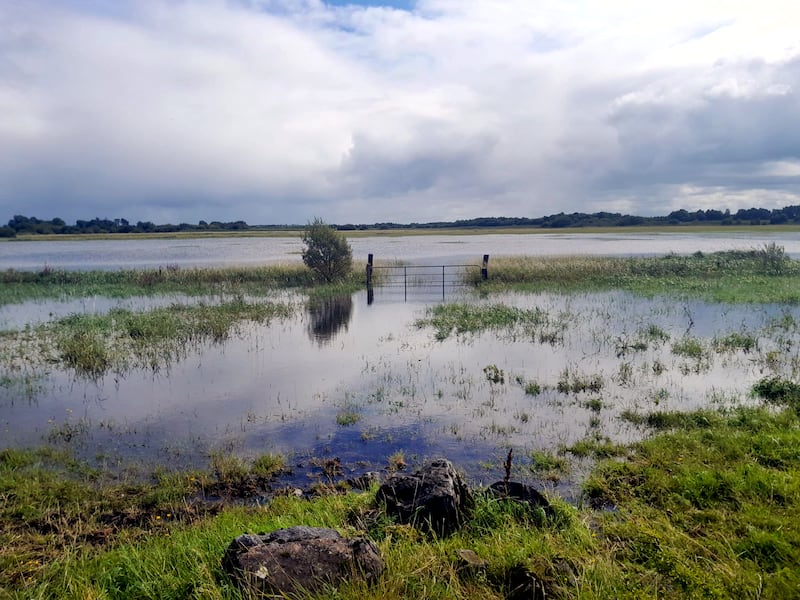Farmers and local landowners protested in Banagher, Co Offaly, on Friday against what they said has been a lack of action to prevent flooding on the Shannon Callows.
The Callows are an area of low lying land between Athlone, Co Westmeath, where the Shannon flows out of Lough Ree, and Portumna, Co Galway, where it flows into Lough Derg.
Flooding has left hundreds of acres of land underwater in counties Westmeath, Roscommon, Offaly and Galway, and prevented farmers from making hay or sileage in July.
Much of the area is part of a designated Special Area of Conservation and some of it is a Special Protected Area for birds.
READ MORE
Washed out
Pat Walsh, the Irish Farmers’ Association (IFA) Co Offaly chairman, said because of flooding and environmental restrictions in the Callows, most cutting would normally begin around July 15th, but this year attempts to cut grass for hay or silage had been washed out.
He said the flooding was also “a disaster” for birds which “could have done with another month” before leaving their nests.
The region has been badly hit by floods in recent years leading to a multimillion euro project to increase the flow of the river through to Lough Derg, and to manage levels, particularly at Meelick Weir.
But Mr Walsh said despite farmers last August calling for synchronised management of weirs in the mid-Shannon region, the land has flooded again. He said he knew of one farmer who had “been denied 350 bales because of the flood”.
“The ecosystem, flora and fauna as well as wildlife and birds are utterly disrupted,” he said.

Speaking at Friday’s protest in Banagher, IFA president Tim Cullinane said “the lack of action to prevent flooding” had left farmers at a loss and fearing a fodder crisis in the winter.
The protest was organised by the Save Our Shannon Organisation which said it had drawn attention to the problem of rising waters to the ESB and Waterways Ireland, which manage the levels.
Responding to the situation, the ESB said in order to mitigate flooding of the Shannon Callows, it had closed all sluices at Athlone by July 14th, which would help stem the flow of water downriver.
It added that once all sluices at Athlone are closed, however, it has no further control of flow of the river in the Athlone area. The ESB noted the river Suck, which flows into the Shannon downstream of Athlone, also has a significant influence on water levels.
The ESB also pointed out the management of flood risk on the Shannon is led by the Office of Public Works (OPW), through the Shannon Flood Risk State Agency Coordination Group. ESB said it “co-ordinates daily with Waterways Ireland as to sluice movement throughout the Shannon”. The ESB has developed an ESB video which “might be useful in explaining the Shannon and our operations on it”.
The OPW said “on a day-to-day basis” water levels are managed by Waterways Ireland and the ESB. It said there was “daily communication and a co-ordinated approach” between the ESB and Waterways Ireland and “in circumstances where there is heavy summer rainfall and increased river levels, flood risks are mitigated to the greatest extent possible”
“Possible approaches to provide a long-term solution to summer flooding in the Shannon Callows are being developed” by the group, the OPW added.
Waterways Ireland said summer flooding in the Callows was “a real concern when there is heavy summer rainfall”. The authority said “all sluice gates were open by July 16th. When all gates at the weirs are open, there is no further action available to prevent further rising water levels”.
“As recently outlined by Met Éireann, this July is provisionally the wettest on record,” Waterways Ireland said. The authority said it was working in partnership with the other agencies “on a strategic response to flooding which has led to increased investment and action along the Shannon corridor”.










